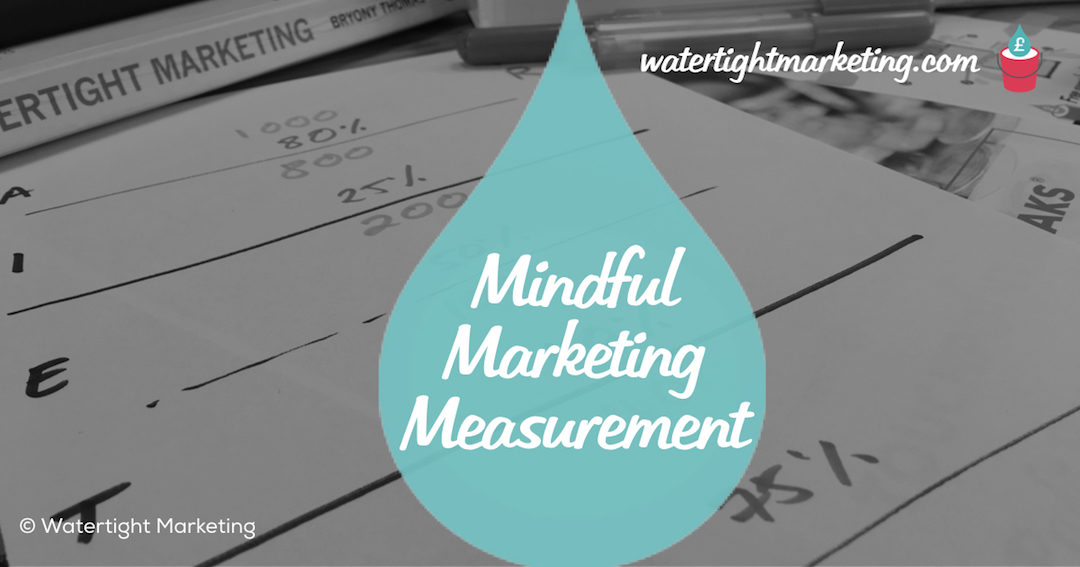Prefer to listen than to read?
This post is also available over on our PodBlog
The way you measure your marketing can have a direct effect on the decisions you make. Keeping this in mind is essential to sound decisions that support your business in the long term.
Measuring your marketing, and responding to it, is key to making a decent return on your investment. But, it’s also worth being alert to the fact ROI as a key metric can put your business on a downward spiral if you don’t balance it out with a commitment to certain values and quality standards.
The nature of the ROI equation is that the less you spend, and more you charge, the better the outcome. What this can lead you into is constantly reducing your spend. Looking up through the buying process, and looking to shave off cost at each step can significantly up your profitability.
But, you need to make sure that these incremental reductions in spend don’t add up to an overall degradation in quality.
And, given that there’s usually a time-lag to knowing the real market response to what you put out there, you may not find out if you’ve overstepped the mark that stops people wanting what you have.
Let’s take Apple, makers of the Mac, iPhone, etc. as an example. Anyone who has ever bought an Apple product can’t have failed to notice the exquisite packaging. It’s beautiful, right down the sticker that reads “Lovingly packed in California”. Now, a simple review of their ROI could lead to a recommendation to cut back on what must be a pretty significant cost – both in terms of materials to create such high quality packaging, and in the expensive American labour to pack it – but it’s exactly this sort of attention to detail that has helped Apple to build the brand and reputation that keeps customers coming back for more and paying, what might seem to be, significantly inflated prices.
You need to establish your quality standards, and stick to them. Every time a customer or potential customer comes into contact with your business you create an impression. Work out what impression you want that to be, and always maintain or improve it. People don’t mind when quality improves, but they hate it when it reduces. Being slavish to an ever improving ROI can lead you into a trap of drilling holes into the sides of your own Bucket.
Work out those things you do that are representative of your brand and your values, and protect them from any cuts in spending.
© Bryony Thomas | Cartoon by Simon Ellinas

Bryony Thomas
Author & Founder, Watertight Marketing
Bryony Thomas is the creator of the multi-award winning Watertight Marketing methodology, captured in her best-selling book of the same name. She is one of the UK's foremost marketing thinkers, featured by the likes of Forbes, The Guardian, Business Insider and many more, and in-demand speaker for business conferences, in-house sales days and high-level Board strategy days.



This is a thought-provoking post Bryony. So much so, you’ve prompted me to write a post of my own about the subject. In the meantime …
RoI is a valuable measure because it enables you to learn where to focus limited funds and time to add most value. Building a business is all about learning; quickly.
Most businesses have very limited resources – both money and minutes, so it’s crucial to understand how to get the most from them. The most out, from the limited available to put in. RoI (properly calculated e.g. including the cost of precious time and over a long-enough time period) enables you to objectively compare alternative uses of the resources available so you can allocate them to the activities that add most value.
That is not to say there isn’t a minimum acceptable RoI. If you borrow money to invest in marketing, the return needs to be greater than the interest you are paying on the loan, otherwise you are losing money and may not be able to repay the loan. And assessed over years rather than months, most shareholders expect the money they have invested in a business to generate a greater return than they could earn from alternative uses of their funds e.g. reducing the size of their mortgage.
Thanks Steve. I think it’s the time period that’s critical here. Measure too soon and you could prematurely cut something that might have paid off handsomely in the long-term. And, sometimes a cut that initially improved RoI can damage long-term profitability as the effect takes time to show in customer retention, etc. My recent post on the three elements of a robust measurement framework covers this in more detail.